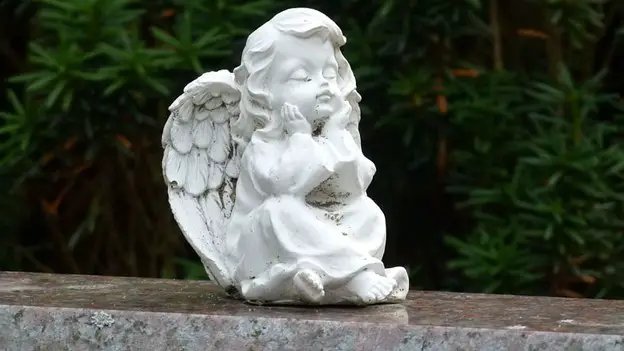Crayola Air-Dry Clay is popular among beginner and expert artists who need a versatile crafting medium. If this is your go-to brand, is there any tip to make your crafting process better and more seamless? The key is to have a damp cloth or sponge for the Crayola air-dry clay smoothing process. This is something religiously used by artists who work with regular clay variants such as earthenware, stoneware, or porcelain. So, how would this tip help with the Crayola Air-Dry Clay crafting process?
Let us learn here!
Why Should You Use Damp Cloth/Sponge For Crayola Air-Dry Clay?
Using a damp cloth/sponge is a crucial step to make the best out of your Crayola Air-Dry Clay. It can help smooth out the surface of the clay while delaying the drying process to help you work on it on your own time without the need to hurry up. This technique helps one achieve a professional and clean look by keeping the imperfections to a minimum.
Moreover, it also helps prevent possible cracks that might happen due to the clay’s fast-drying nature. When using this clay, you might also notice that upon drying, the clay might become a tad uneven. This is because the sped-up drying process can cause different sections of the clay to dry unevenly. Having a damp cloth or sponge to slow down the drying process can provide you with a rather polished appearance while preventing any cracks or flaking.
So, how would you successfully apply this technique when crafting with Crayola Air-Dry Clay?
1. Allow The Clay To Dry Partially:
Before you apply this technique, you must allow the Crayola Air-Dry Clay to partially dry. When you apply the damp cloth on wet clay, it can get damaged or deformed due to additional water content. Moreover, if you let the clay dry for way too long, the clay might not respond well to the smoothing that happens with the damp sponge/cloth. The key is to smooth out the surface of the clay when the sculpture has reached a semi-dry stage which is generally a few hours after the clay has been shaped.
2. Process To Dampen The Clay Surface:
To successfully implement this tip, start by dipping your sponge or cloth in water and rinse out the excess. Ensure the cloth or sponge is damp but not wet or dripping wet. If you are working with a cloth, place the damp cloth over the clay for at least 30 minutes to let the clay absorb the moisture. Alternatively, if you are using a damp sponge, gently dab on the clay to allow it to absorb the moisture.
3. Smooth Out The Surface With Gentle Pressure:
Once the clay has absorbed an appropriate amount of moisture, start by gently pressing and gliding the cloth or sponge on the Crayola Air-Dry Clay’s surface. The moisture absorbed by the clay will make the clay a tad softer allowing you to even out the surface or any rough patches, cracks, or fingerprints. Make sure you apply gentle pressure and don’t go too hard with the smoothing action. In a sweeping or circular motion, you can smooth out the sculpture’s surface. Repeat this process as required, while ensuring that the sponge or cloth maintains its dampness.
Is This Tip Important When Crafting With Crayola Air-Dry Clay?
Yes, this tip is very crucial when crafting with Crayola Air-Dry Clay. So, how does it help? Here’s how!
1. Better Appearance:
Smoothing a Crayola Air-Dry Clay sculpture with a damp cloth or sponge helps you achieve an aesthetically pleasing and refined appearance. While the natural, textured look of the Crayola Air-Dry Clay is something several crafters love, others aim for a smoother finish for decorative items or sculptures made by this clay brand.
2. Better Paint/Color Absorption:
If you wish to paint your Crayola Air-Dry Clay project, having a smooth surface will always work in your favor. It provides a better canvas for when you wish to apply paint. The distribution and absorption of the color are even while the color dries out to be bright and has a better hue. Moreover, the paint won’t even flake after it has dried out completely.
3. Reduced Cracking:
The process of smoothing your Crayola Air-Dry Clay with a damp sponge or cloth can help seal any minor crack that might develop during its drying process. As the clay dries, these cracks can continue to get bigger. However, when sealed with the help of added moisture from the cloth, the cracking issue can be prevented.
4. Seamless Blending:
If your air-dry clay figurine is made up of several parts, this smoothing process ensures that the parts blend seamlessly and do not break off once they dry out. This is a crucial step if you wish to achieve a cohesive look as you approach your project’s final stage.
5. Minimal Need For Sanding:
When you smooth out your Crayola Air-Dry Clay sculpture with a damp cloth or sponge, it doesn’t need a lot of sanding after it has dried out. Sanding tends to be a messy and time-consuming process. The damp cloth technique reduces the time dedicated to your work by automatically smoothing the surface. Although you might need some sanding to perfect that finesse, it is less than what you would have originally done if this process was skipped.
Conclusion
The damp cloth/sponge technique will always work in your favor when done right. It will also reduce any need for extra effort and help you craft better with Crayola Air-Dry Clay. Whether you are worried about fingerprint smudges or inconsistent texture, this technique will take care of it all. However, make sure the cloth/sponge isn’t dripping wet or your sculpture will lose its shape. Moreover, you can also use a damp cloth to cover your unused clay while you are working on your sculpture. This prevents it from drying and going to waste. If you are new to crafting with Crayola, this is something you should try.







